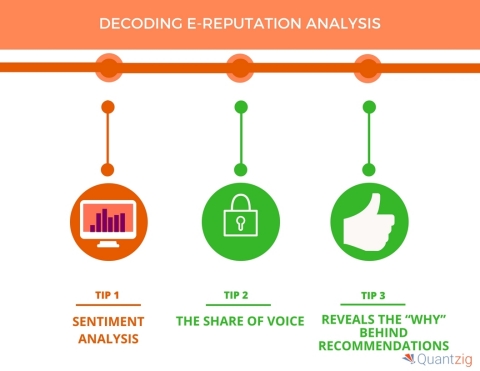Quantzig Lists the Tips to Evaluate the Impact of E-Reputation Analysis
Quantzig, a global analytics solutions provider, has announced the completion of their recent whitepaper on the tips to evaluate the impact of e-reputation analysis.

In the current scenario, we have come to a stage where organizations believe that social networks are the most significant tools to boost their brand presence on digital platforms. Some of them spend more time concentrating on their social media accounts than on their site. Regardless of what we might think, modern firms cannot ignore the scale of this phenomenon and must make strategic decisions when it comes to launching their presence on social channels. It is in this scenario that most companies find themselves at a crossroad. In this whitepaper, Quantzig lists the tips to evaluate the impact of e-reputation analysis.
“In addition to the self-publishing phenomenon, there was also the social network phenomenon, where individuals could connect with one another with the simple click of a button, once again at zero cost.” says an expert from Quantzig.
Tips to evaluate the impact of e-reputation analysis
- Sentiment Analysis: E-reputation analysis is connected with sentiment analysis. Finding out if internet users speak highly or poorly of a brand. We, then, need to be able to categorize the messages that have been captured (negative, positive, or neutral) into the categories provided by the various specialist applications in this domain.
- The Share of Voice: Which place has our brand taken in the expansive space of its category? What is its advertising and competitive weight, as stated by the conversations of its “market share”? This is what the idea of “Share of voice” tries to find out. It tries to ascertain the percentage of messages that worry a specific brand in relation to the total number of messages for all of its competitors. The solution which is used must be influential enough to gather all the messages that are vital to the calculation.
- Reveals the “Why” Behind Recommendations: Next generation price optimization systems allow a business’ pricing analyst to know that a price was suggested; for example, for strategic reasons, such as matching a competitor, aligning margins to augmented commodity costs, or because the product’s current price is not supported by the price elasticity determined from the sales data.
Recommended Read: Rakuten Marketing Whitepaper Reviews US Compliance Framework for GDPR












Comments are closed.